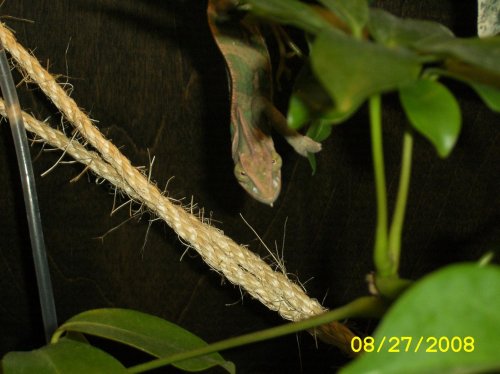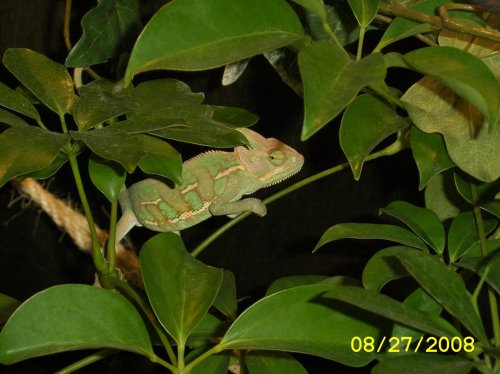I can find lots of sites that talk about nasal excretion of salts...but not one of them refers to a calcium salt.
Here are some of those sites...not about chameleons....but still about nasal salt excretion...
http://bio.research.ucsc.edu/~barrylab/Lisa/Pages/research.html
"The salt glands of lizards, unlike those of marine birds, sea turtles, or sea snakes, are unique in their ability to vary the composition of the secreted fluid, secreting potassium chloride as well as sodium chloride depending on dietary ion content."
https://ritdml.rit.edu/dspace/handle/1850/2517
"The teiid lizardAmeiva quadrilineata has a nasal salt gland that responds to NaCl loading by increasing excretion of Na+ (from 1.12 to 2.63 uM/100 gh), K+ (from 0.14 to 2.43 uM/100 gh), and Cl– (from 1.10 to 5.47 uM/100 gh). "
http://www.ncbi.nlm.nih.gov/pubmed/14074841?ordinalpos=1&itool=EntrezSystem2.PEntrez.Pubmed.Pubmed_ResultsPanel.Pubmed_DiscoveryPanel.Pubmed_Discovery_RA&linkpos=1&log$=relatedarticles&logdbfrom=pubmed
http://www.sdnhm.org/research/symposia/herpsym98ab.html
Here are some of those sites...not about chameleons....but still about nasal salt excretion...
http://bio.research.ucsc.edu/~barrylab/Lisa/Pages/research.html
"The salt glands of lizards, unlike those of marine birds, sea turtles, or sea snakes, are unique in their ability to vary the composition of the secreted fluid, secreting potassium chloride as well as sodium chloride depending on dietary ion content."
https://ritdml.rit.edu/dspace/handle/1850/2517
"The teiid lizardAmeiva quadrilineata has a nasal salt gland that responds to NaCl loading by increasing excretion of Na+ (from 1.12 to 2.63 uM/100 gh), K+ (from 0.14 to 2.43 uM/100 gh), and Cl– (from 1.10 to 5.47 uM/100 gh). "
http://www.ncbi.nlm.nih.gov/pubmed/14074841?ordinalpos=1&itool=EntrezSystem2.PEntrez.Pubmed.Pubmed_ResultsPanel.Pubmed_DiscoveryPanel.Pubmed_Discovery_RA&linkpos=1&log$=relatedarticles&logdbfrom=pubmed
http://www.sdnhm.org/research/symposia/herpsym98ab.html




